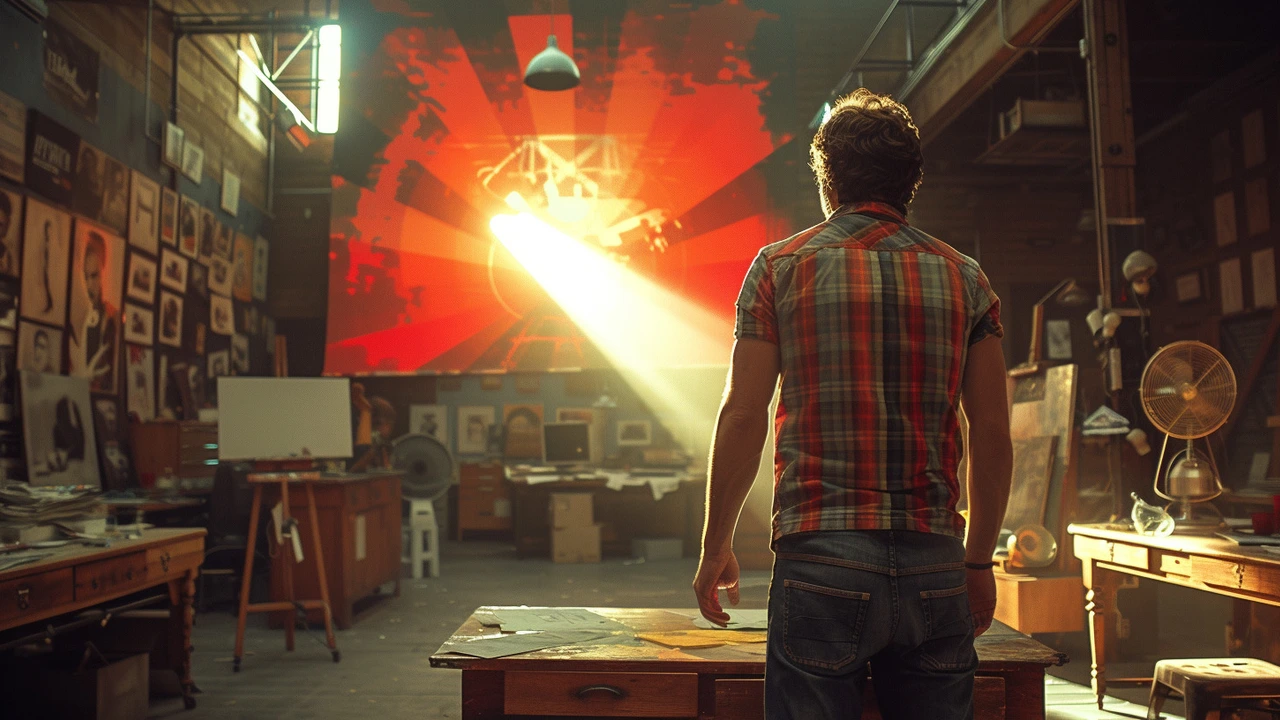Peering into the Essence of Suprematism
Let's jump right into the deep end, folks! Picture the scene. It's the early 20th century, amidst a vibrant and chaotic whirlwind of artistic innovation and revolution. A movement arises, setting itself apart, purposefully divorcing itself from the norm. Ladies and gents, we're talking about Suprematism, a Russian-founded abstract art movement, a trailblazer, a rebel, and certainly, an enigma trying to capture the supremacy of pure artistic feeling.
Brainchild of Kazimir Malevich, Suprematism was born in 1915, thus named for its focus on the supremacy of forms, particularly, basic geometrical forms. Malevich believed that these fundamental shapes, when divested of any reference to the material world, could command a pretty powerful emotional response. And so, he got to work on canvases that could rival a mathematical set square!
I like to think of Suprematism as the Marie Kondo of the art world. Who needs detailed depictions of landscapes and portraits when the raw emotional resonance of a rectangle could spark so much joy? You may question the sanity behind Malevich’s thought process, but once you dig a little deeper, his approach isn’t quite as baffling. In fact, he ironically declared that, in his reduction of art to its simplest form, he found a kind of complexity – a space full of possibility, mystery and emotional depth.
Dabbling in the Realm of Suprematism
Let's take a detour into my past. Many moons ago, as a penniless art student, I found myself stuck in a rut. My work felt uninspired, churning out numerous life studies and fruit basket still lifes that appeared to echo the word 'mediocre'.
Then, I stumbled upon Suprematism. Rather ironically, I found it in an old, dusty library book - not exactly the hub of cutting-edge innovation. Page after page of starkly simple geometric compositions jumped out at me. Why, how could a simple square on a white background elicit such a profound sense of emotion in me? It felt as though I’d discovered an alien language, mystifying but intriguing. That was the start of my long affair with Suprematism!
Back to the present, if you're looking to experiment with Suprematism, remember this: It's all about creating emotion, creating a sensation, and not about depicting the reality. Suprematism calls you to create artwork that connects directly to the viewers’ perception of and response to basic geometric shapes, colour, and form. Confused? I don't blame you, but give it a shot, and you might surprise yourself!
Reading Between the Squares
Alright, we’ve now welcomed Suprematism into our hearts, minds, and maybe even onto our canvases. It's time to decode these pieces and the sentiments buried beneath their geometrical facades. You see, while suprematist artworks look drastically simple, they certainly are not one trick ponies! In fact, I'd argue that this is where the beauty of Suprematism thrives.
Let's picture Malevich’s famous work, ‘White on White’. A square within a square, both varying shades of white against a white backdrop - it's the whitest party you'll ever attend! Yet, it's in this simplicity that complexity thrives. Beneath the white surfaces, if you observe, you'll find a sea of emotions, a symphony of invisible gestures, and spatial interactions. These elements coalesce into a depiction of pure feeling, rather than a mere representation of tangible objects.
Learning to 'read' Suprematist art like this takes time and patience but trust your intuition. Each person's interpretation would vary as the artwork connects more with one’s emotions and perceptions than just the visual sense. In essence, reading Suprematist art is somewhat like understanding poetry - the more you invest, the more you can extract!
A Brush With Shapes - The Suprematist Toolkit
So, discussing the aesthetics of Suprematism is one thing, but to truly appreciate it, you've got to get stuck in. To that end, here's a fun little exercise for those ready to take the leap into the world of Suprematism.
Pick up your tool of choice, be it a paintbrush, a pencil or even a mouse cursor with a graphics software on the ready. Start with blank canvas - your very own universe to fill. Begin with the simple shapes. Draw a circle; nest a square within it; accompany them with a triangle. Now, play with colours, but remember, keep it basic. Monochromatic, primary colours or tonal gradations work well.
Once you've got your shapes and colours, move them around. Arrange and rearrange them until they sit in a way that creates emotion. If you start feeling satisfied, if those shapes somehow speak to you, if they arouse an emotion, you know you are right on the suprematism path. It's all guess-work, intuition, and feeling.
Once you’ve delved into it, you’ll realize the power of the art of Suprematism. Just like I did all those years ago in the dusty archives of the art school library. I found a space to discuss thoughts and emotions outside of our everyday language, in a form that was heavily calculated and paradoxically free. So, go on, give it a shot - you might just find that the simplicity of Suprematism unlocks an entirely new world of complexity within you!




